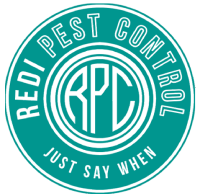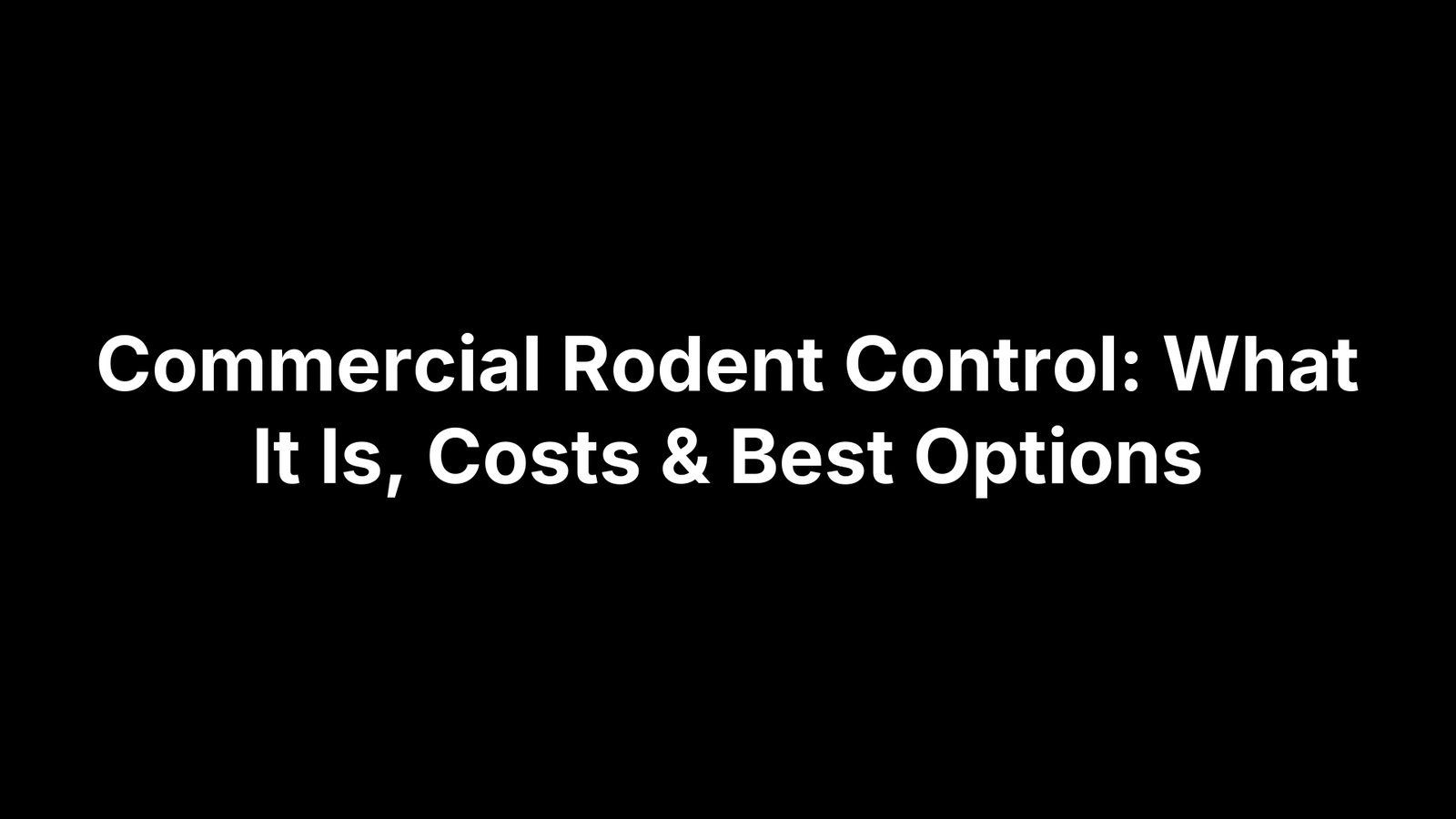One rodent sighting can shut down a line, fail an audit, or send customers elsewhere. Commercial rodent control is the professional approach to preventing and eliminating rats and mice in workplaces—restaurants, warehouses, offices, healthcare. It combines inspections, sealing and proofing of entry points, sanitation guidance, targeted trapping or baiting, and ongoing monitoring. Unlike residential service, it’s built for scale and accountability: discreet off-hours visits, safe materials, documented reports, and strategies tailored to your site, risk, and regulations.
In this article, you’ll get an overview of what’s included, the tools pros use—from snap traps to SMART monitoring—and how Integrated Pest Management (IPM) lowers risk long term. We’ll cover who needs it, key signs, compliance and documentation, service models and response times, typical costs and what drives them—plus ways to save without cutting corners. You’ll also learn how to vet providers, what to expect on the first visit, and simple prevention steps your team can start today.
Who needs commercial rodent control and why it matters
Any site with food, water, and shelter attracts rodents: restaurants, food and beverage processing, warehouses and logistics, hospitality, healthcare, office properties, retail, education, and pharmaceuticals. Even spotless facilities are vulnerable—mice fit dime-size gaps and rats squeeze through quarter-size openings.
Beyond nuisance, the stakes are operational, financial, and regulatory. Rodents contaminate products, carry disease, gnaw wiring (fire/outage risk), damage structures, and trigger audit failures or shutdowns. Commercial rodent control delivers prevention-first IPM, documentation for compliance, and rapid response to protect people, inventory, brand, and uptime.
Signs of a rodent problem in commercial spaces
Rodents rarely announce themselves during business hours, so train eyes for the small clues that signal activity. Catching these early prevents contamination, electrical damage, and failed audits. During walk-throughs and cleaning, have your team and your commercial rodent control partner look for:
- Droppings: Capsule-like droppings near walls and equipment.
- Gnaw marks: Fresh chew marks on wood, materials, wiring, or fixtures.
- Makeshift nests: Nests tucked behind equipment or inside structural voids.
- Burrows: Openings or soil disturbance on exterior grounds.
- Greasy rub marks: Dark, oily smears along baseboards and walls.
Document all evidence, note locations and dates, and alert your provider promptly to move from detection to elimination.
Compliance and documentation requirements for regulated industries
If you operate in a regulated environment—food handling, healthcare, pharmaceuticals—auditors expect a documented, prevention‑first IPM program. Passing often hinges less on “no sightings” and more on proof you monitor, correct, and trend rodent risks over time. Your commercial rodent control provider should deliver standardized service documentation and help keep records audit‑ready.
- Activity and trend logs: Written logs of pest activity, inspections, and trend summaries by area and date.
- Device mapping: Device locations and service dates documented on a simple site map.
- Corrective actions: Sanitation and structural deficiencies with corrective actions and verification dates.
- Exclusion proof: Exclusion/proofing work completed, with notes or photos of sealed entry points.
- Materials & training: Materials used (labels/handling guidance) and staff training/communication records.
What professional rodent control includes (IPM explained)
Professional rodent work is built on Integrated Pest Management (IPM)—a prevention‑first, data‑driven cycle. Rather than relying on one‑time treatments, IPM reduces the conditions that attract rodents, blocks access, and uses targeted controls only where necessary. In commercial rodent control, that becomes a measurable plan tailored to your risks, operations, and audit requirements.
- Risk‑based inspection and assessment: Map hot spots, ingress routes, rooflines, docks, and utility penetrations.
- Sanitation and habitat correction: Tight trash practices, sealed food storage, drain hygiene; fix leaks and standing water.
- Exclusion/proofing: Install door sweeps; seal cracks and utility gaps with metal mesh or sheet metal; optional toilet one‑way valves where plumbing allows.
- Device strategy and monitoring: Place and service tamper‑resistant stations and traps; set inspection frequency by risk.
- Targeted control: Snap/multi‑catch traps and labeled baits applied only where safe and necessary.
- Documentation, trends, and training: Device maps, activity logs, corrective actions—and brief staff on signs and sanitation SOPs.
Methods and tools professionals use to eliminate rodents
After the inspection, pros combine exclusion with targeted capture/kill devices and, when appropriate, bait in tamper‑resistant hardware. Placement follows rodent behavior—edges, walls, travel routes—and service cadence is set by activity and risk. The goal is fast knockdown with minimal disruption, backed by documentation and safe materials suited to sensitive environments. This blend is the backbone of commercial rodent control programs in foodservice, warehousing, healthcare, and offices.
- Trapping: Snap traps for quick kill along walls and runways; multi‑catch traps for mice in sensitive zones without rodenticide.
- Tamper‑resistant bait stations: Exterior perimeters and non‑food areas with labeled baits; consumption trends flag pressure.
- Exclusion hardware: Door sweeps; seal cracks and utility gaps with metal mesh or sheet metal; optional one‑way toilet valves in older plumbing.
- Sanitation and moisture fixes: Tight‑lidded trash, frequent removal, and leak repairs remove food and water so devices work faster.
Digital and SMART monitoring options
Digital and SMART monitoring adds always‑on visibility to commercial rodent control. Sensor‑enabled traps and connected bait stations monitor activity 24/7 and send real‑time alerts, so your provider can respond quickly between scheduled visits. These systems pair non‑toxic capture options with digital logs and reports, making it easier to prove control and prioritize exclusion and sanitation.
- 24/7 alerts: Real‑time activity notifications and remote status checks.
- Non‑toxic options: Humane capture choices for sensitive or regulated areas.
- Audit‑ready records: Device maps, service history, and activity trends.
- Data‑driven service: Placement and inspection frequencies set by verified pressure.
SMART tech amplifies IPM—it doesn’t replace sealing, sanitation, and routine inspections. Next, align these options to your site’s risk profile.
Best options by business type and risk level
Risk varies by business model, audit pressure, and building design. The best commercial rodent control matches device type, density, proofing, sanitation, and monitoring to that risk. Use this quick guide to align options.
- Food & Beverage Processing (highest risk): trap-first indoors; exterior tamper-resistant stations; dock/drain monitoring; sanitation and exclusion; SMART for audit logs.
- Restaurants & Foodservice: exterior baiting; interior traps; nightly trash/drain care; door sweeps; seal gaps; optional one-way toilet valves.
- Warehousing & Logistics: perimeter stations; trap lines along walls/docks; trim vegetation; gravel strip; SMART for large footprints.
- Healthcare & Pharma (critical): non-toxic interior trapping; sealed storage; tight proofing; detailed documentation; connected monitoring preferred.
- Hospitality, Retail, Office & Multifamily: discreet after-hours service; exterior stations; targeted interior traps; prioritize exclusion, trash control, and staff training.
Service cadence and response speed scale with risk level—more on timelines next.
Service models and response times you can expect
Expect commercial rodent control to run as a program: assessment, knockdown, recurring service paced to risk, and emergency coverage. Visits are discreet and often after‑hours to avoid downtime.
- Programmed IPM: Risk‑based schedules with device service and activity trend reports.
- Clean‑out/knockdown: High‑frequency follow‑ups until activity drops, then maintenance.
- Emergency dispatch: For urgent issues, one national provider advertises two‑hour response and four‑hour on‑site.
- Exclusion projects: Proofing/sealing delivered one‑time or phased, scheduled around operations.
Costs and pricing: averages, factors, and ways to save
Commercial rodent control pricing is program‑based, not one‑size‑fits‑all. Residential mice extermination often runs $176–$614 per incident, but businesses are quoted after an on‑site assessment. Expect separate line items for clean‑out, recurring service, exclusion/proofing projects, and optional digital/SMART monitoring. Final pricing reflects device density, visit frequency, documentation obligations, and any rush dispatch.
- Footprint and complexity: square footage, docks, rooflines, food areas.
- Risk and audit pressure: tighter cadence and more documentation.
- Activity level: severity dictates device counts and follow‑ups.
- Exclusion scope: door sweeps, sealing utility gaps, toilet valves.
- Service windows and response: after‑hours windows; some providers offer two‑hour response/four‑hour on‑site.
To control spend long‑term without cutting corners:
- Tighten sanitation: remove food odors, fix leaks, eliminate standing water.
- Proof early: install door sweeps; seal dime/quarter‑size gaps with metal mesh or sheet metal.
- Reduce harborage: declutter, trim landscaping, add a perimeter gravel strip.
- Use trend data: right‑size service frequency; target SMART where pressure is highest.
How to choose the right commercial provider
The right commercial rodent control partner protects audits, uptime, and brand. Judge providers by their process, documentation, speed, and proofing depth—not the cheapest quote. Ask to see how they measure risk, report trends, and coordinate discreet after‑hours work with your team.
- Credentials: Licensed/insured; food‑safety and audit‑aware training.
- True IPM: Risk assessment, device map, sanitation + exclusion.
- Audit‑ready records: Trends, corrective actions, labels/handling guidance.
- Exclusion depth: Door sweeps; seal utility gaps with metal mesh/sheet metal.
- Response speed: Defined response windows and emergency dispatch.
- SMART options: Digital monitoring with 24/7 alerts and data access.
- Clarity: Clear scope, transparent pricing, re‑service guarantees; staff coaching.
What an initial visit looks like, step by step
Your first service sets the tone: a discreet, audit-ready assessment that pinpoints pressure, closes gaps, and builds a measurable plan. Expect a methodical walk-through, immediate risk reduction, and clear documentation before the ongoing commercial rodent control program begins.
- Kickoff brief: goals, sensitive areas, audit needs, access and hours.
- Site inspection: interiors/exteriors, docks, rooflines, drains, utilities, grounds.
- Evidence mapping: droppings, gnaw marks, rub lines, nests, burrows.
- Immediate actions: traps, tamper-resistant stations, minor exclusion, leak fixes.
- Plan, schedule, and documentation: IPM scope, device map, cadence/SMART options, corrective actions and staff tips.
Prevention practices your team can implement today
Even the best commercial rodent control works fastest when your team removes food, water, and shelter. Start with tight sanitation, basic proofing, and consistent documentation. These low‑cost habits reduce pressure, make traps and monitoring more effective, and help you pass audits without surprises.
- Inspect hot spots daily: Look for droppings, gnaw marks, nests, burrows, and greasy rub lines.
- Lock down trash: Empty often; use tight‑fitting lids; clean bins and corrals.
- Store food securely: Use rodent‑proof metal or heavy‑duty plastic containers.
- Seal entry points: Add door sweeps; seal cracks and utility gaps with metal mesh or sheet metal.
- Fix water sources: Repair leaks; eliminate puddles; check faucets, gutters, HVAC, and ice machines.
- Clean drains and floors: Remove food debris and residues on a routine schedule.
- Declutter and organize: Reduce harborage; tidy storage and back rooms.
- Trim landscaping: Cut back limbs; keep plants off walls; consider a perimeter gravel strip.
- Defend restrooms (older plumbing): Install one‑way rodent‑proof toilet valves.
- Document and escalate: Log evidence and locations; share promptly with your provider.
Key takeaways
Rodent risks are business risks—product loss, audit failures, outages, and reputational damage. The fix isn’t a one‑off “spray and pray”; it’s a program: inspect, proof, sanitize, deploy targeted devices, and verify with trend data and, when helpful, SMART monitoring. Do that consistently and you shrink pressure fast and keep it down.
- Act early: train staff to spot droppings, gnawing, rub marks.
- Close doors and gaps: door sweeps; metal mesh/sheet metal at utilities.
- Trap first indoors: use baited perimeters where appropriate and safe.
- Work the plan: risk‑based cadence, documented findings, corrective actions.
- Add SMART where it pays: catch activity between visits, tighten service.
Ready to protect uptime, pass audits, and stay rodent‑free? Book a discreet, audit‑ready assessment with Redi Pest Control.


